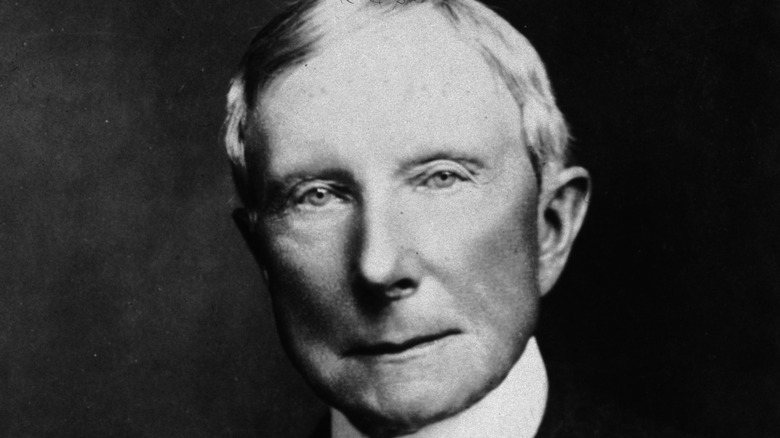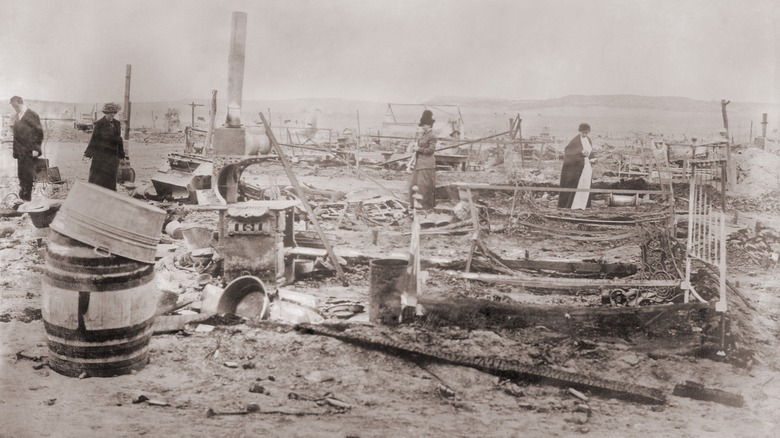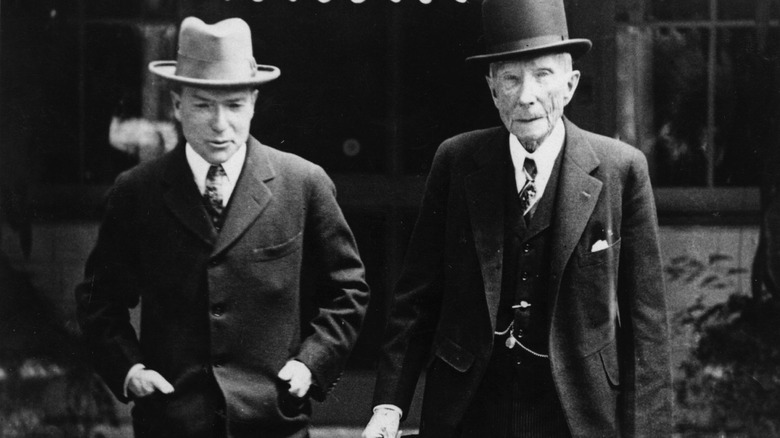The Truth About The Assassination Attempt On John D. Rockefeller
Wealthy industrialist John D. Rockefeller created countless enemies during his lifetime. His family's hard stance on labor issues fueled the ire of many, and the explosive conflict between the Colorado Fuel & Iron Company and its workers led to the Ludlow Massacre. This brutal and violent attack on miners proved to be the final straw for some. A group of anarchists plotted to take out Rockefeller and his son, John D. Rockefeller Jr., in retaliation, according to The New York Times.
The conflict that led to the Ludlow Massacre began with a strike by miners in September 1913, according to PBS' American Experience. The walkout lasted for months, much to the dismay of the Rockefellers. On April 6, 1914, John D. Rockefeller Jr. testified in front of a congressional committee that the "strike has been imposed upon the company from the outside," taking the opportunity to blame unions for the growing problem. He also stated that he would keep this mining camp union-free "at any cost."
The Rockefellers and the Ludlow Massacre
On April 20, 1914, the Rockefellers orchestrated the most vicious reprisals by a company against its workers in American history. The family had the support of the governor of Colorado, and the governor brought in the National Guard to end the strike (via History). The troops went to a miners' camp near Ludlow where they opened fire on the roughly 1,000 workers and their families. The miners tried to fight back with the limited number of weapons they had. A leader for the miners was killed trying to reach a truce.
Women and children sought to escape the hail of bullets by digging pits under their tents as a place to hide. But then the forces set fire to the tents. When the smoke finally cleared, a gruesome discovery was made the following morning. The bodies of 11 children and two women were found in a pit, all of them had died because of the fires. In all, 66 people died during this strike. No legal action was taken against anyone involved in the massacre.
Days after the Ludlow Massacre, writer Upton Sinclair penned an open letter to John D. Rockefeller Jr. "I intend to indict you for murder before the people of this country. The charges will be pressed, and I think the verdict will be 'guilty'," the letter stated (via PBS). Others, however, had other ideas on how to hold the Rockefellers accountable for their actions.
Escaping a bomb plot
After the Ludlow Massacre, protesters demonstrated outside numerous places associated with the Rockefellers. A small group of people connected to the Industrial Workers of the World, a labor organization, sought a radical solution to the problem posed by leading capitalists like the Rockefellers (via The New York Times). A plan was hatched to permanently take out John D. Rockefeller and his son, and the weapon of choice was supposed to be a bomb.
Unfortunately for the would-be assassins, they had a severe mishap during the bomb-making process. On July 4, 1914, the dynamite they were using exploded accidentally. The explosion lifted the roof of the New York City building that they were using as a bomb factory and destroyed several of floors. Four people died in the incident, including three men involved in the effort to assassinate Rockefeller. The plot against the wealthy industrialist was revealed by a survivor of the blast. Despite such efforts to the contrary, John D. Rockefeller lived to the ripe old age of 97 (via Britannica).


